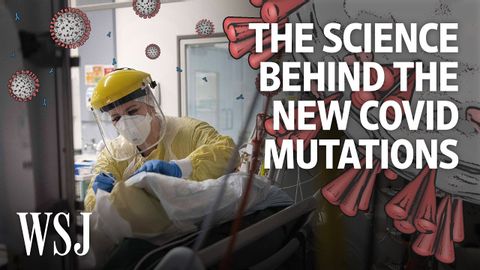冠状病毒正在变异这是我们所知道的(The Coronavirus Is Mutating. Here’s What We Know | WSJ)
joey joey 發佈於 2021 年 05 月 30 日  沒有此條件下的單字
沒有此條件下的單字US /ˌɪndəˈvɪdʒuəl/
・
UK /ˌɪndɪˈvɪdʒuəl/
- n. (c.)個人;單個項目;個體;個人賽
- adj.個人的;獨特的;個別的;獨特的
US /pænˈdɛmɪk/
・
UK /pæn'demɪk/
- adj.(疾病)大規模流行的,廣泛蔓延的
- n.大流行病
US /ˈkrɪtɪkəl/
・
UK /ˈkrɪtɪkl/
US /dɪˈtɚmɪn/
・
UK /dɪ'tɜ:mɪn/

